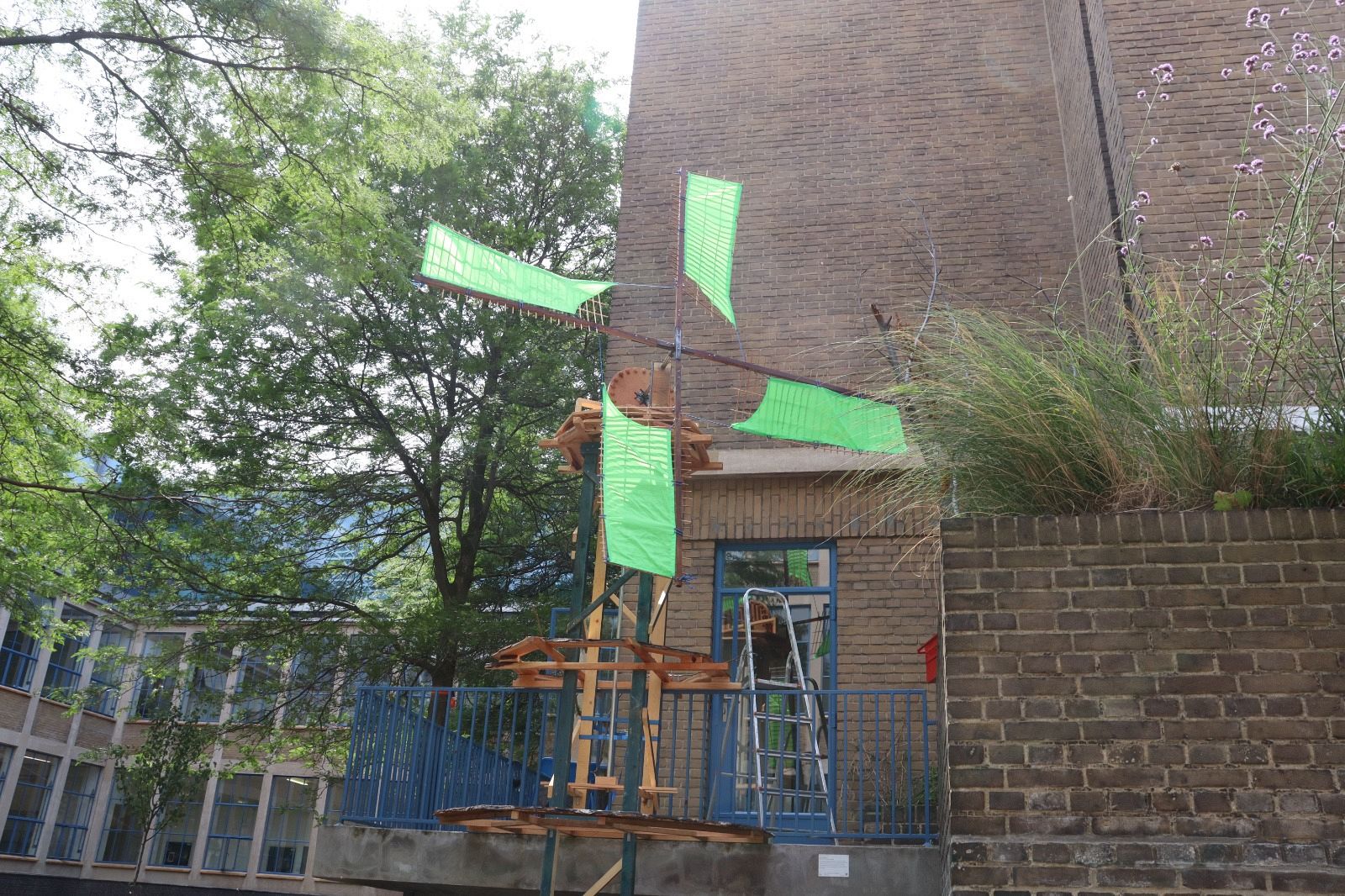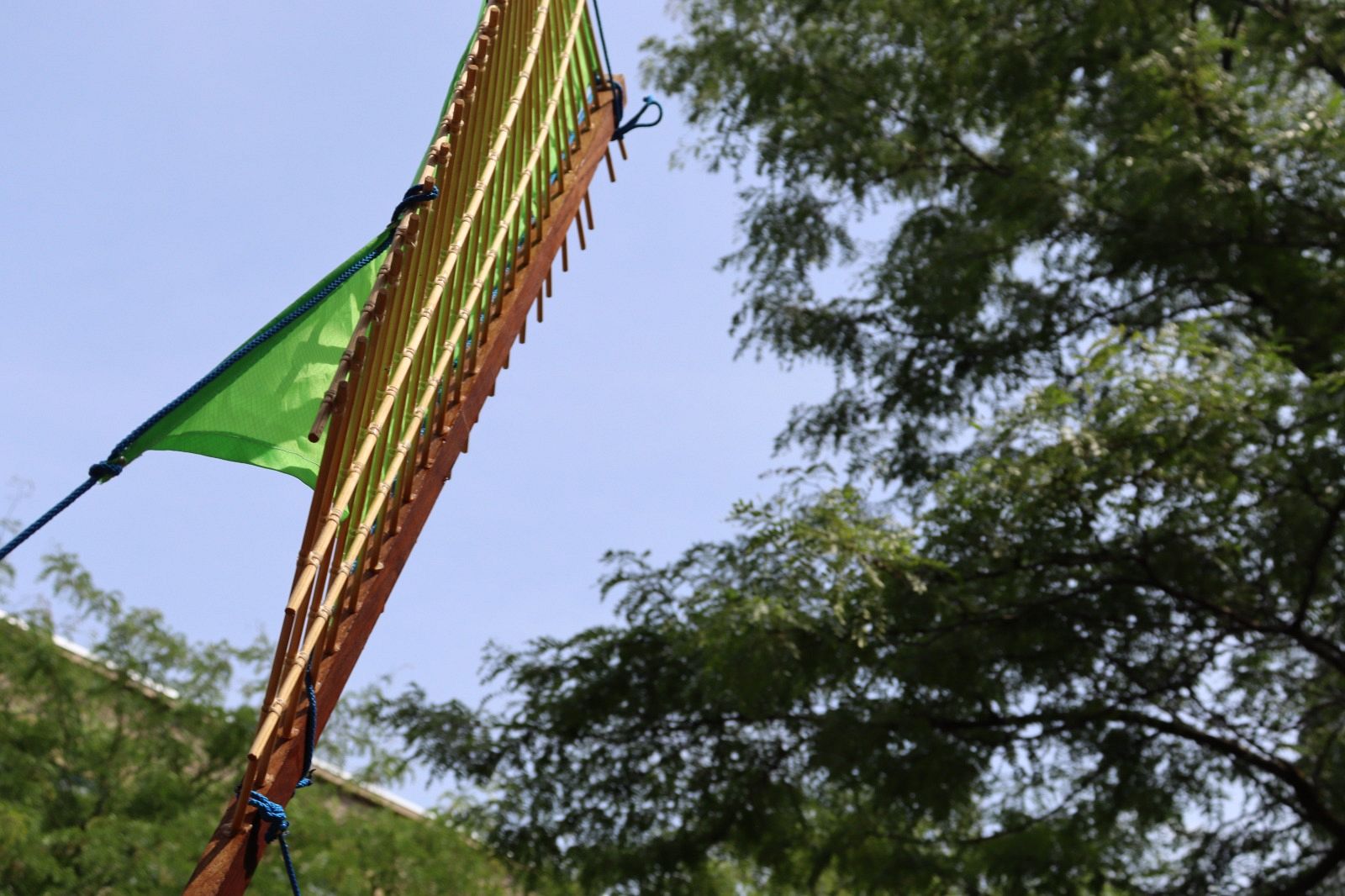
Pam Breedveld
Keywords: Wind, Water, Technology
Internship: Ambassade van de Noordzee
The windmill is simple and ingenious but certainly not innocent. With the help of poldermills the Dutch tamed water and created land. By becoming a symbol of water management, it contributed to an attitude of dominance over the natural environment. The ancient machines in Kinderdijk are protected heritage that should preserve the story of the fight against the water, the story of a nation that is used to exploit their ability to control water as a major export product. Nevertheless, today’s reality of rising sea levels demands to change the mindset of fighting the water and rethink our relationship with technology. This urgency instigated the ongoing artistic research project that is currently titled ‘But what if there’s no wind?’.
Inspired by the work of Ursula K. Le Guin and her understanding of how stories about technology and its connected descriptive language are of influence in the way we treat our technologies, I aim to speculate with the historical narrative of the Dutch windmill, doing so by the act of rebuilding a windmill. Rather than tools to control, they could be approached as mediators between the wind, the water, the human. The process of reconstructing a windmill in the courtyard of the Royal Academy of Art is primarily instigated as an experimental form of knowledge production rather than a finished work of art or design.
During this process, I'm investigating what it means to build a windmill on this specific location. Which interactions are already there? Who are all the actors within the complex ever changing network of human and more-than-human actors the courtyard is, before and during the graduation show? What will happen afterwards? How’s the water affected by the plants growing in it and vice versa? How is the intervention I’m designing intervening in all the other interactions within the courtyard? To what extent should I centralize my own intentions as a designer / artist, and to what extent should I let go of them in order to be open to what the location demands, to be aware of the intentionality of materials, of insects, of all the garden companions? How do I adapt to them? And what if, after all, there is no Wind?
I’ve translated the lessons I’ve learned from the windmill and its history into design values and principles for the building process. Some of them – acceptance of dependency on the natural forces, humility to wind, the aim to only use second hand or local materials - demanded a certain slowness in the building process. However, these seemingly limiting principles eventually brought me to a story that is literally buried between the tiles of the courtyard.


